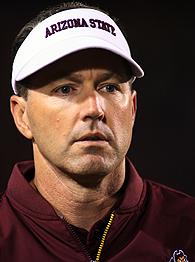First, a basic report from MSNBC immediately following his death. Note that at this time, it was still being reported that he had been killed by enemy fire.
After his funeral, Gwen Knapp of the San Francisco Chronicle wrote an interesting article: Challenge yourself.
Tillman talked about everything, with everyone. According to the speakers, he had read the Bible, the Koran, the Book of Mormon, Ralph Waldo Emerson, Henry David Thoreau, and he underlined passages constantly. Garwood recalled how he'd mail articles to friends, highlighting certain parts and writing in the margins: "Let's discuss."
Tim Layden of SI wrote a tremendous personal essay Remembering Pat Tillman the morning he heard the news that Pat was dead.
A few minutes ago my 12-year-old son walked into my home office to check on me. I turned to him, and all I could think to say was, "Pat Tillman says hello."
Later in 2004, Layden nominated Pat as his sportsman of the year.
And there I sat in my tall chair, spouting off and thinking: Tillman would despise this. He would deplore that television anchors and journalists and politicians are making a fuss over his death or worse yet, using his death to push their own agendas. With each passing live shot, I felt more out of place, more desirous of running and apologizing to Tillman's memory.
In September 2006, SI published Remember His Name by Gary Smith.
Pat just had that way, with colonels and coaches and Nobel Prize winners, too, of slicing through rank and reputation, of turning every encounter into nothing more or less than two human beings talking. Hell, the guy introduced himself to strangers simply as "Pat," and if they asked what he did before strapping it on for Uncle Sam, he'd say he studied some back at Arizona State and quickly ask about them, never mentioning the summa cum laude or the Pac-10 defensive player of the year award, and certainly not the NFL. And still, something about him made you walk away wanting to learn more, laugh more, run more, give more.
The fallen soldier of fortune by Adrian Wojnarowski of ESPN includes some great insight from Doug Tammaro of ASU's Sports Information Department.
In the year since Tillman died during a firefight in Afghanistan, Tammaro has told a thousand stories that have undoubtedly reached millions of people. He's determined to make sure that people know all about the man Tillman was, about all the dimensions of his life and character that went far beyond the headlines and sound bites centered on the million-dollar football player for the Arizona Cardinals who left it all behind in the wake of September 11th to fight for his country.

